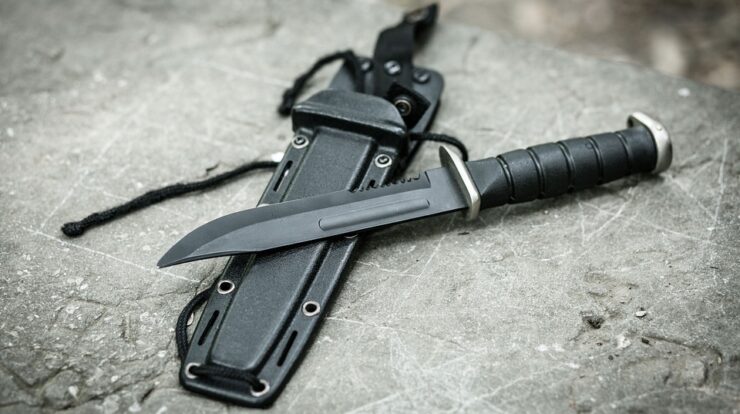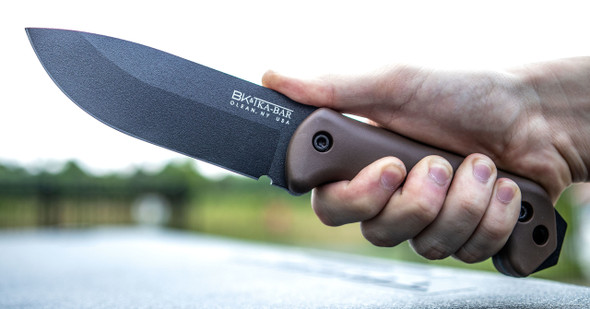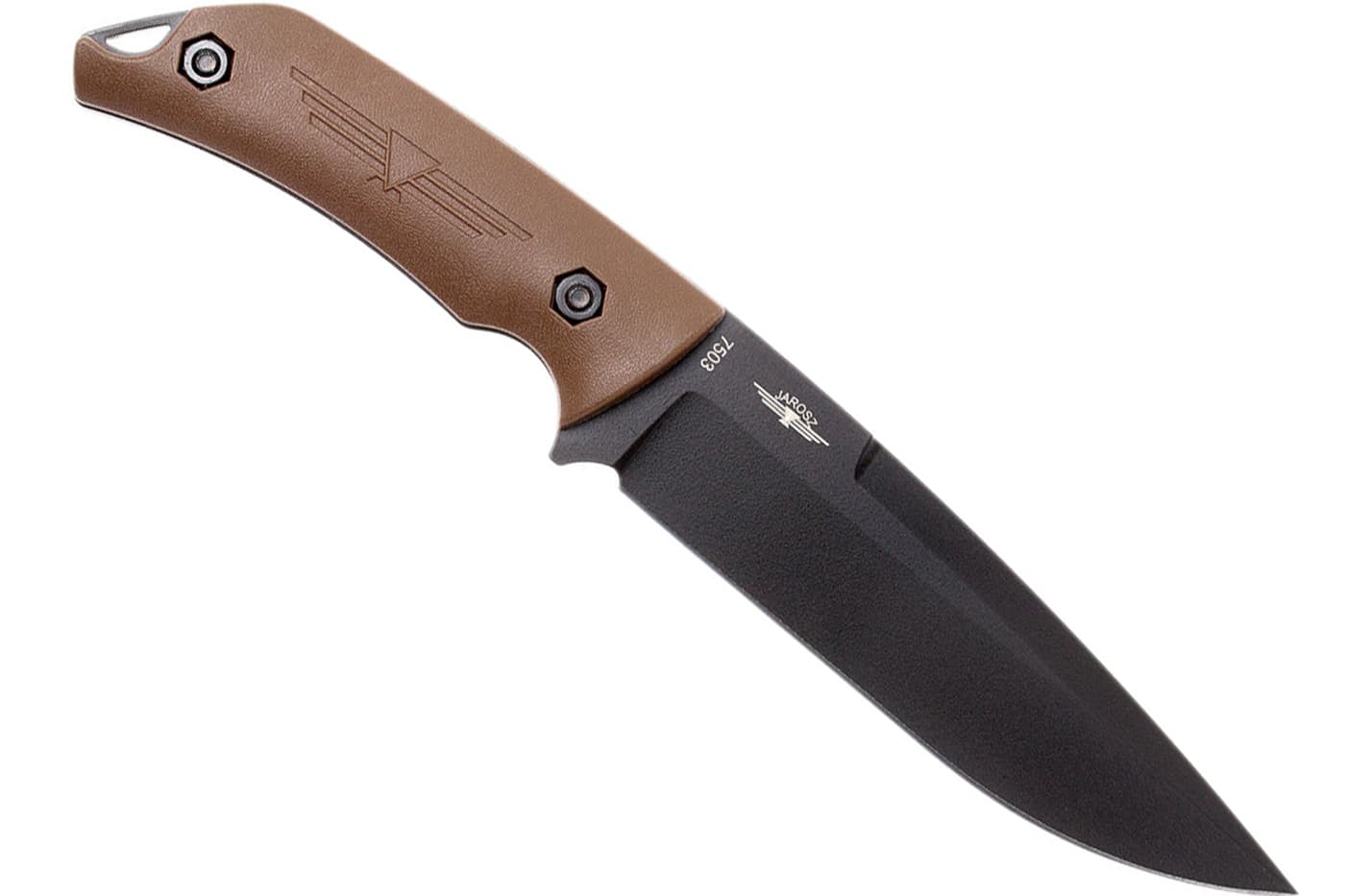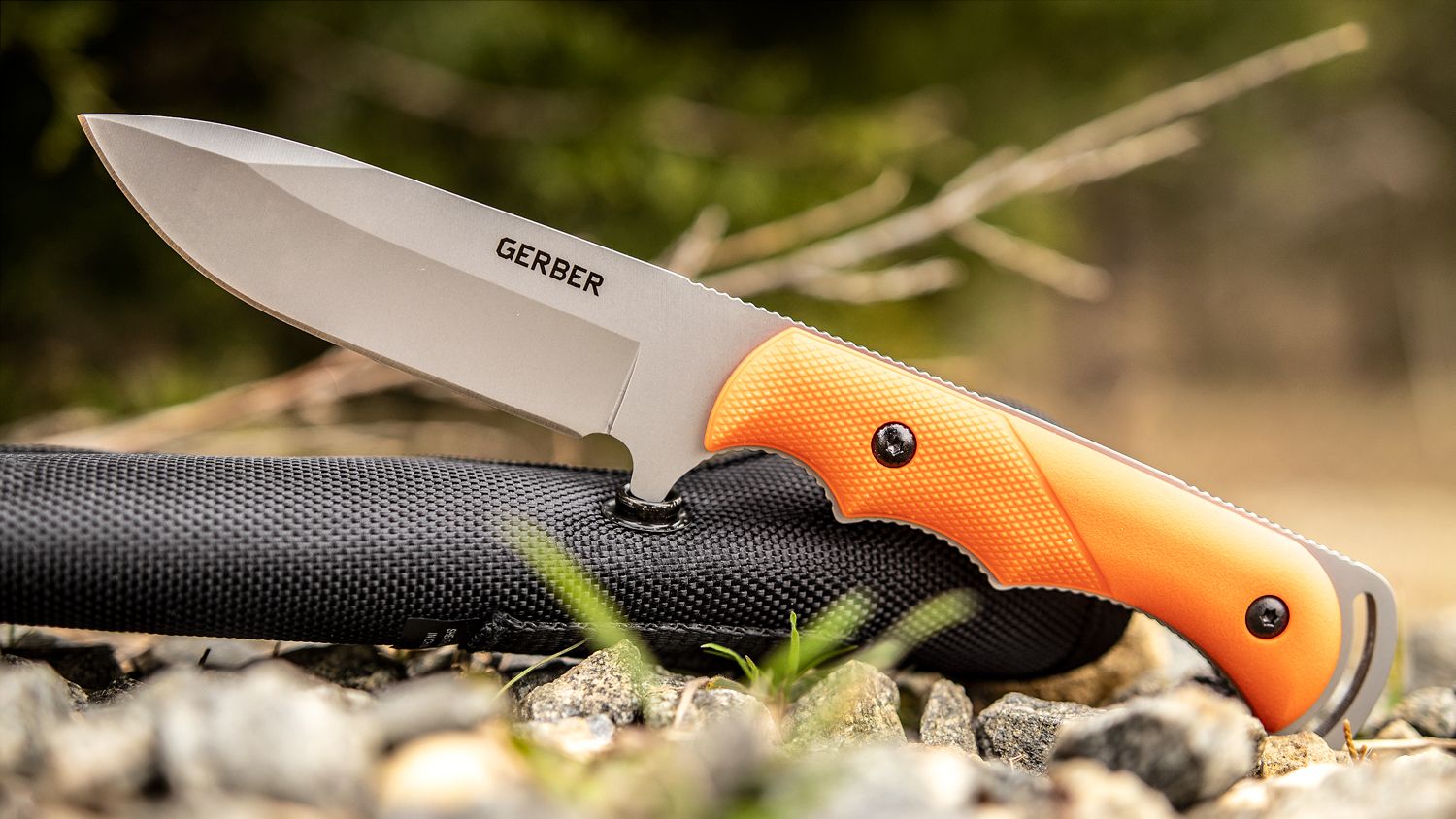
Knives have been around since prehistoric times, which means they are even older than my mother in law.
But is there such a thing as the ultimate survival knife?
Just like anything else in this world, people selling knives love to talk a lot of marketing talk and it’s difficult for the average consumer to figure out the facts.
I mean, look at me — I’ve had one stainless steel fixed blade knife for like 10 years. I mainly used it for cleaning the gunk under my pinky fingernail but that’s a topic for another article.
Recently, I decided to treat myself with a real survival outdoors knife. I went deep into research and figured out what makes a good survival knife good.
My mission here is to show you what I’ve learned after spending 60+ hours of researching survival knives.
I read everything I could get my hands on, I transposed that into attributes I think are important for a survival knife and then I made a shortlist of around 15 knives that somewhat fit the bill.
I then went to test all 15 and ended up with 4 that completely fit my criteria.
So, with all due respect — this is your summarized, no-bullshit guide to the best survival knifes.
But Ferret, what makes a good survival knife?
I asked myself this very same question after seeing terms such as bushcraft knife, tactical knife, survival knife, wilderness knife and others. It was confusing at first.
I mean, I’m sure all of these can be considered good for survival purposes?
Wrong.
What I soon found is that there are many types of knives and all of them are different. I will explain how exactly in a minute.
But first, we have to realize what actually constitutes as a survival knife:
- Survival knife is a knife you use to survive until you reach civilization or get help.
- Survival knife has to be compact enough to fit easily in your bag
- Survival knife has to be extremely durable and easily sharpened
- Survival knife has to be usable in wilderness
So with this in mind, what are the attributes that we have to look for when choosing a knife for general survival purposes?
Here’s what I think makes a good survival knife.
| Criteria | Explanation |
|---|---|
| High carbon blade | Easy to resharpen using rocks, durable; either 5160 or 1095 carbon; Steel is difficult to resharpen in the field and it can snap quicker; High carbon can take a lot of abuse but is succeptible to rust if left wet. |
| Compact blade (between 5.5 and 7.5 inches) | Smaller knifes are more practical and easier to work with. You can chop, slash and do carving/meat prep. |
| Blade thickness of up to ¼ inch | You need a thick blade for it to handle the hard abuse you’re about to put it through. |
| Enough weight | Survival knife has to have some weight to it, as you’ll be using it for a variety of different things like splitting kindling and hammering stuff in. |
| Either drop point or spear point blade | You need a durable tip. Both figuratively and literally. |
| No serrations | There’s really no way to resharpen serrations in an emergency scenario, so having them on a survival blade is just a waste of money. The simpler the better. |
| Exposed tang | Avoid the fully enclosed tang: With an exposed tang blade the handle can be usually removed if it loosens up in the field, so you can easily rewrap it with paracord. With the exposed tang knives you can use the bottom part of the handle as a hammer. |
| Simple handle design | You want a simple handle that fits any hand without fancy thumb and finger inserts. |
So, with this in mind…
What is the best survival knife?
In my opinion, these are the only survival knives on the market that fit the criteria:
- ESEE 6p
- KA-BAR Becker BK2
- Ka-Bar 7503
- Gerber Freeman Guide
All of these have an exposed tang and carbon blades.
They are simple, durable and can be sharpened on a smooth rock that you can surely find in any stream.
If their handle loosens up, you’ll be able to make a DIY wrap and keep using the knife, and most importantly you can use them for anything from chopping, digging, hammering, meat prep, slicing veggies and, in non-emergency scenarios, even threatening your neighbor if his 4 wheeler is parked on your driveway.
Let’s now go into more detail on each of them…
1. ESEE 6p (Best overall survival knife on the market today)

The ESEE 6p has it all — it literally checks every box from the list above and does so in style. This blade came out in 2018 after a massive success of the 5 series and in my opinion it upgraded it in many ways.
It’s 11.75” (29.8cm) long and has a 6.50” (16.5cm) blade that’s made of 1095 high carbon steel that’s 3/16” thick. This knife is made to be abused.
What I like about it especially is the fact that it’s an epitomy of multi-purpose knife. It’s a wilderness survival knife but it can be tactical if you want it to. The handle on the back is exposed so you can use it to hammer things in (for example tent pegs) or even grind food.
It has a fixed blade with a drop point tip and a simple handle. As I said, it’s best to avoid weird handles, as very few of them are made to fit any hand size. Weird thumb placement can hurt you, especially if you’re slashing something hard.
The handle on the ESEE 6 is made from Micarta, an extremely grippy canvas-like material. It’s actually a cloth substrate coated with resin, and the texture makes it grip like crazy.
As a bonus, this blade comes with a polymer sheath, a clip plate, cord lock and some paracord. Since the handle can be taken off, paracord can come in handy for an emergency scenario if you have to make your own handle — just wrap it around the blade where the handle used to sit and you’ll be good to go.
This blade comes with a no questions asked, lifetime warranty, so if it breaks they’ll replace it for you free of charge.
I love this knife as you can see (as does everyone else on the market) so be sure to check it out.
2. KA-BAR Becker BK2 (Best big survival knife)

Realistically, the BK2 splits the first place with the ESEE 6, but due to this being a list I had to put it in as a close second.
Just like the 6, the BK2 is also a true multi-purpose full tang knife. Interestingly enough, it’s designed by Ethan Becker — to be honest, I have no idea who that is but he sure as hell can design a blade, that’s for sure.
The BK2 fits the bill just fine:
It’s longer than the ESEE6 (probably the reason I placed second) and measures at 18” (45cm) long and a tad heavy at 450 grams.
OK, I admit, it’s a bit long and heavy but it’s still a fixed blade and it can be used for a variety of survival tasks: you can split kindling with it, use it to build a shelter and even chop onions.
The sheath is made of glass coated nylon and comes with a MOLEX clip.
I think one of the most important aspects of this knife is its blade, as it’s made from 1095 Cro-Van steel.
This is actually a regular high carbon blade but with two added elements: Chromium and Vanadium. It has a lot of carbon in it so even the bladesmiths consider this material a “working horse” and suitable for the great outdoors.
The blade on the BK2 is actually pretty big, which you may or may not like. Either way, one can’t help but notice that this knife is just a tad better for the woods than the ESEE 6p. I mean you can easily use it to chop thinner tree material, especially using a rock as a hammer.
Just like the 6p, the BK2 has a pretty basic handle but is all in all, an amazing all-rounder.
3. Ka-Bar Turok 7503 (Best compact survival knife)

If you’re looking for a do-it-all knife that’s on the smaller scale, and something that you can take into the woods with you as sort a fight or flight companion, the Turok is the real deal:
- Clip point 1095 Cro-Van steel blade
- Overall length 11.5” (29 cm)
- Blade length 6.25” (16 cm)
- Handle length 5.25” (13 cm)
- Solid handle, full-tang knife
The reason why I’m marking it down as the best overall compact knife is because it does everything good:
- You can chop firewood with it
- You can make kindling with it
- It cuts, so you can skin smaller game
- It peels and cuts a variety of materials
Ever get that feeling when you pick something up in your hand and it feels good? I’m not talking about that you freak, I’m talking about tools.
This knife…it just feels like it’s been in my possession for the last 20 years. It feels familiar, sturdy, dependable and trustworthy. I trusted it from the get go and ultimately that’s the most important thing.
To trust your tool. Pun intended.
4. Gerber Freeman Guide (best hunting small knife)

The Freeman guide is my fourth pick and this is the knife I would go for this knife if my ultimate concern was handle grip and/or budget.
Like the other 3 knifes on this list, the Freeman Guide is also full tang and fixed blade, and has this really interesting rubber grip. It’s not the type of rubber that you’re used to, so I tried to find out what it is exactly and it’s something called TacHide — it’s a type of rubber compound produced by Gerber to be specific and it’s awesome.
Dimension wise, we’re looking at the overall length of 8.4” (21 cm), so it’s a bit on the smaller side, and a total of 4.4 oz (124 gr) in weight. Basically you won’t even feel it in your hand.
What I believe this knife does the best is cleaning game when hunting, in all weather conditions.
The only downside to it is that the sheath is not the best — it’s nylon and not really sturdy, but honestly at this pricepoint you can get yourself a Kydex sheet to go along with it.
So, if you’re living somewhere where the climate changes often and you need a reliable outdoors knife that doesn’t break the bank, take a closer look at this baby.
Continue reading: 10 best MREs for the money according to my humble opinion
